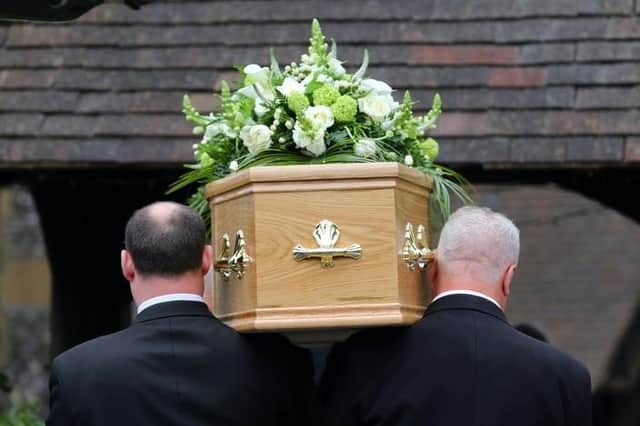Over 3,000 deaths in Sunderland last year


Data from the Office for National Statistics (ONS) shows 3,273 deaths were registered in the city in 2022 – down from the 1,756 the year before.
In 2019, 3,113 deaths were registered, while this rose to 3,554 in 2020, the highest figure during the pandemic.
Advertisement
Hide AdAdvertisement
Hide AdNationally, coronavirus accounted for 12.1% and 11.5% of all deaths in 2020 and 2021 respectively, but this dropped to just 3.9% in 2022, making it the sixth-highest cause of death.
Dementia and Alzheimer’s disease led the way, accounting for 65,967 deaths (11.4%), up from 61,250 (10.4%) in 2021.
Alzheimer’s Research UK described the figures as “a stark reminder of the terrible and far-reaching effects of dementia on our society”.
The ONS say that the fact that 2022 saw a fall in Covid-19 deaths, not a rise, reflects the success of the vaccination programme, which has reduced sharply the number of infected people who go on to become seriously ill or die.
Advertisement
Hide AdAdvertisement
Hide AdVaccines were first rolled out across the country in early 2021, with booster doses subsequently made available to older and vulnerable groups.
Samantha Benham-Hermetz, director of policy and public affairs at Alzheimer’s Research UK, said: “Our most recent survey showed that two in 10 people are unaware that dementia is even a cause of death, yet last year it claimed nearly 66,000 lives in England and Wales alone.
“Despite its devastating impact, and in contrast with other leading causes of death like heart disease or cancer, there are still no treatments available on the NHS that can slow or stop it.”
She added: “As the impact of the pandemic recedes, we must learn from the lessons of Covid-19 and speed up progress in finding new ways to treat, diagnose and prevent dementia.”
Advertisement
Hide AdAdvertisement
Hide AdSarah Caul, ONS head of mortality analysis, said the figures also show a “significant" gender change in the mortality figures – with 292,064 male deaths in England and Wales last year, compared with 285,096 females.
She said: “For the third year in a row, we’ve seen more males than females dying, a reversal of the trend since the 1980s.”